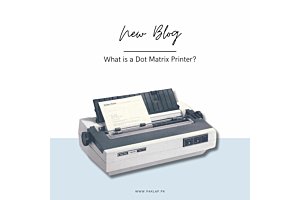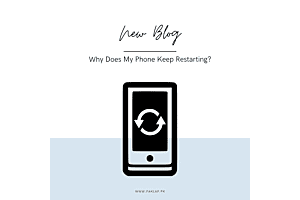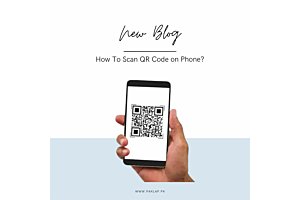The various uses of virtual reality
Recruitment and training
Companies now recruit and train their workforce by using virtual reality that reproduces real-world environments that are challenging and simulate what the employee would have to go through in the office. Companies also make use of simulated interviews to filter out applicants and select the best candidates for the job. The use of VR allows for potential employees to get a feel for what a typical day at work might be like, and the work environment they may find themselves in. This is aimed at employees to prepare themselves to offer the best solution for any obstacles they might face. Companies also have the ability to train employees remotely. VR bridges the gap between the physical and virtual, by providing remote employees with a feeling of satisfaction of being physically involved.
Collaboration in workplaces
Companies have recently started to embrace virtual sharing to allow teams to collaborate on assignments without being geographically bound. This makes it easier for teams in different geographical locations to effectively communicate and collaborate with each other while ensuring tasks are completed on time. Considering teamwork is the beating heart of any company, Virtual Reality makes it possible to hold meetings in a much more immersive and interactive virtual environment.
Healthcare
The healthcare industry has been one of the biggest adopters of VR tech, using computer-generated images to diagnose and treat patients. VR simulations are now capable of using diagnostic images from ultrasounds and CAT scans to develop 3D models of the anatomy of a patient. These virtual models help surgeons determine the safest way to diagnose patients while practicing complex medical procedures without putting the life of the patient on the line.
Medical training
Medical procedures and surgeries can be very complex to perform. The human anatomy and its various complexities along with the fact that the patient’s life is on the line make surgery a very daunting task for even the most experienced surgeons. Medical and dental students benefit from the interactive nature of Virtual Reality which allows them to practice surgeries and other medical procedures in a consequence-free environment. VR eliminates the elements of inflicting harm on the patient and the underlying fear of making a mistake. Virtual patients are also used to allow students to develop skills that would have to be applied in the real world later on. VR offers the perfect combination of improving medical training and optimising costs, especially since healthcare systems around the world are always under the crunch when it comes to budgets and funding.
PTSD treatment
Post-Traumatic Stress Disorder is a disorder common amongst soldiers who experience trauma during combat. However, PTSD is not limited to soldiers and is found amongst the general population, who have found themselves to have undergone a traumatic mental or physical experiences such as sexual assault or road accidents. VR helps treat fears associated with PTSD patients by helping them mentally relive through their experiences. Reliving experiences helps medical teams to understand what the patient went through in order to better understand their condition and help them find better coping mechanisms.
Therapy for Paraplegics
People with different physical abilities have the opportunity to use VR to experience - virtually - what they can not in the real world, without being limited by their physical abilities. VR headsets are also being implemented during treatment to help paraplegics go through cognitive training and regain control of their limbs.
Tourism
VR has greatly benefitted the tourism industry. VR allows for companies to provide their clients with a preview of various holiday destinations around the globe virtually. Clients can virtually visit different destinations and shortlist where they would like to go before making a final decision. The virtual world allows for people to immerse themselves in the culture and traditions of various destinations before making their final decision. If someone does not have the ability to travel, Virtual Reality makes it possible for them to visit those destinations and experience different regions of the world without having to physically travel.
Military
The military uses virtual-reality devices to train soldiers. Non-commercial versions of games like Unity 3D are used to prepare soldiers for combat. These simulations allow for teams to practice working together in virtual environments that mirror a real battlefield situation, where they have to be tactical while using military-issued equipment. Scientifically, being able to train and learn in an ultra-immersive environment like that of VR allows for better retention as the learner is more focused and understands their training better.
Shopping
Online shopping may be all the hype right now, but we have all seen how rapidly technology takes steps forward and leaves the last trend in the dust. Virtual Reality apps like Trillenium could be how consumers purchase products in the future. Apps like Trillenium show virtual tours for their stores, which is a step above your day-to-day shopping experience.
Courtrooms
In the future, judges, lawyers, and the jury may not have to evaluate crime scenes looking at two-dimensional photos and videos. Reconstructing a crime scene in 3D could potentially help jurors visualize the scene of the crime. Researchers at the University of Zurich published a paper in the Journal of Forensic Science, Medicine, and Pathology which examined the potential use of VR headsets like the Oculus Rift to reconstruct events leading up to crimes discussed at trial. Interactive technologies like VR may promote further understanding of the various details of a case and make verdicts easier to pass.
Education
Toyota has started using Oculus headsets to educate teenagers and parents about distracted driving through its TeenDrive365 campaign. Immersive experiences in virtual environments can be revolutionary for education in all fields, for people of all ages. VR can make cognitive learning faster, more effective, and allow for better retention of learning. Students can be taken on virtual field trips, such as a tour of the solar system, which was merely a diagram before. They can go back to different eras and experience the Renaissance or landing on the moon. VR is particularly useful for students with special needs such as autism. Research has found that VR can motivate students with Autism Spectrum Disorders (ASD) to safely practice social skills.
Fashion
VR is helping fashion brands take their product lines to the next level by simulating store environments to alter designs and store layouts without spending millions on renovation and reconstruction. Coach, Gap, and Tommy Hilfiger have already begun using VR tech. These big-name companies can now offer 360-degree experiences of sold-out fashion shows and allow for customers to try on outfits virtually, anywhere, anytime.
Find the latest Tech gadgets with Virtual reality features at Paklap.pk





